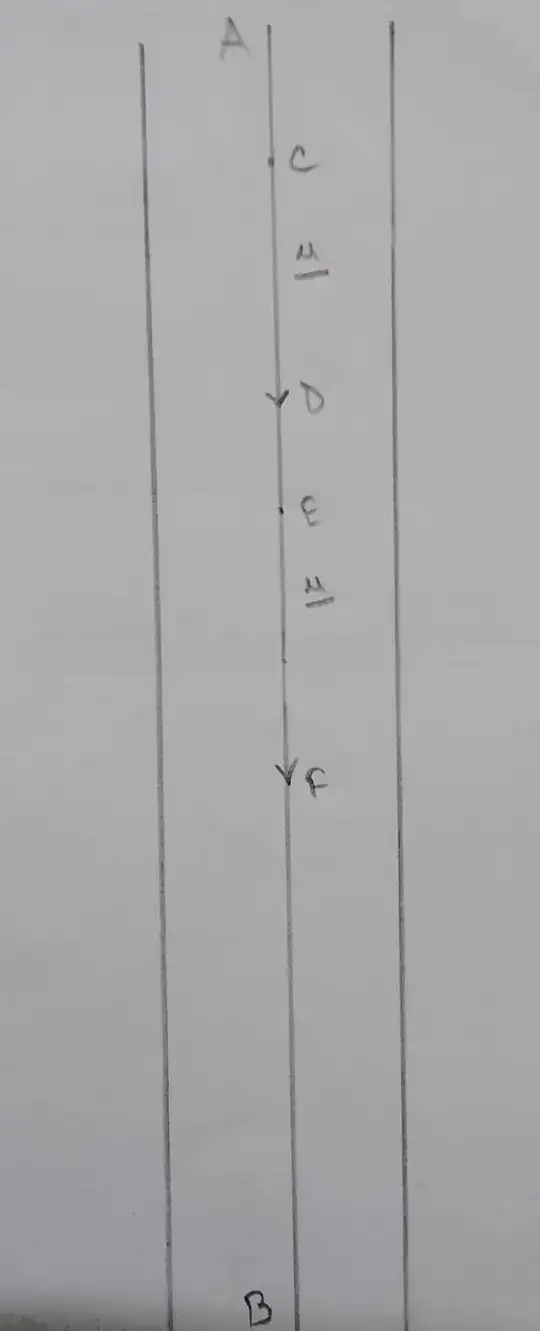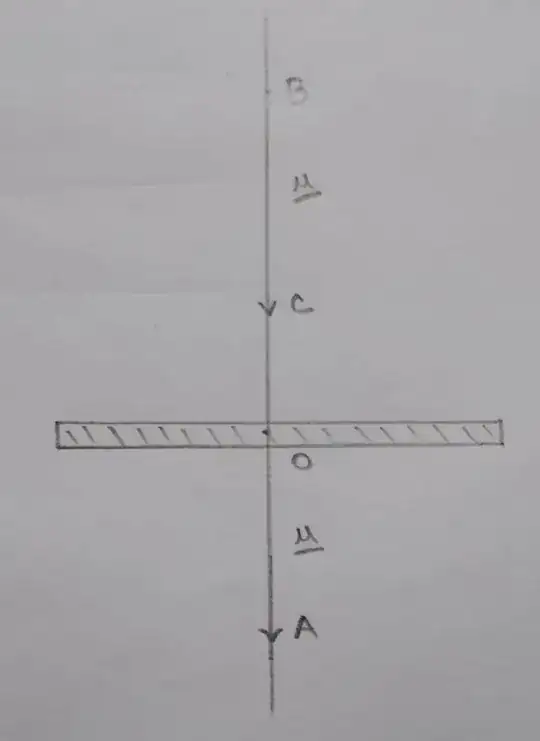Scenario 1:
Here $AB$ is the line of action of the force $\underline{u}$, and $AB$ passes through the center of mass of an infinitely long rigid and uniform bar. Here, $\vec{CD}=\underline{u}$. Now, if $\vec{CD}$ is slid and $\vec{CD}$ becomes $\vec{EF}=\underline{u}$, the physical effect will remain the same. In other words, it doesn't matter whether the $\underline{u}$ vector acts at the point $C$ or the point $E$, the effect on the bar will remain the same. So, in this scenario, there is utility in the existence of the line of action $AB$.
Scenario 2:
Here $BA$ is the line of action of the force $\underline{u}$, and $BA$ passes through the center of mass of a rigid and uniform bar. Now, let a force $\vec{OA}=\underline{u}$ act at point $O$ of the bar. Now, as force is a sliding vector, we can slide $\vec{OA}$ and $\vec{OA}$ becomes $\vec{BC}$. However, I have a problem here. There is no physical meaning/significance to the vector $\vec{BC}$ as there is to $\vec{OA}$, unlike scenario 1. According to this answer, $\vec{OA}$ can be slid along its line of action, and $\vec{OA}$ and $\vec{BC}$ have the same effect on the bar. However, to reiterate, I believe that there is no physical meaning to $\vec{BC}$ as neither $B$ nor $C$ are points on the bar. $\vec{OA}$ acts on the bar and has a physical meaning since $O$ is a point on the bar. However, $\vec{BC}$ is acting on literally nothing, unlike $\vec{OA}$, so what is the physical meaning of sliding the vector $\vec{OA}$ in this case?
My question:
- What is the meaning of sliding $\vec{OA}$ in scenario 2?
This might help you in answering my question.

